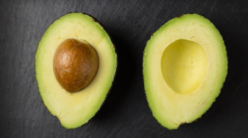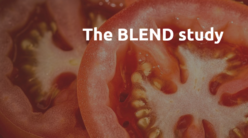By Ada Garcia

In 2011 after returning from a year of maternity leave my research motivations were very much baby driven. With this in mind, I became fully engage on a new line of work that has been extremely fruitful and has helped define my area of expertise towards child nutrition.
Current recommendations for solid food introduction encourage to offer home-made baby foods but 58% of UK babies are estimated to receive commercial baby foods between the ages of 6 and 12 months, this makes it essential to scrutinise the nutritional quality and marketing strategies used by baby food industry.
The first breakthrough in this line of research came from a survey of commercial baby foods in the UK. Our key finding was that a large proportion of baby foods in the UK market were recommended for 4 months which contradicts the WHO recommendations to introduce solid foods at 6 months of age. We also found that a majority of spoonable (wet) foods marketed at 4 months were sweet, which can have consequences on dental health and promotion of a sweet tooth with implications for negative eating behaviours – this lead to this commentary in the Guardian.

Giving the public and government interest on infant nutrition an evidence based scrutiny of the baby food market is essential for the generation of evidence to inform food policy and consumer choice. With this in mind, we set out to assess how the baby food market in the UK has changed between 2013 and 2019, by carrying out a cross-sectional survey of all infant food products available to buy in the UK online and in-store in 2019 – this new research is available here.
How did we carry out the research?
We used a database of baby foods developed in our unit. Nutritional content and product descriptions were recorded and compared with an our existing 2013 database. Wemeasured changes in the proportion of products marketed to infants aged 4 months, proportion classified as sweet versus savoury, and spoonable versus dry (snacks) average sugar content.
Overall, there was an increase in commercial baby food products with 84% more brands and double the products compared with 2013. There were 32 brands selling baby foods including 27 brands that were not included in 2013.
In 2019, a total of 898 commercial baby foods were identified. Of these, 611 (68%) were spoonable products, mostly packed in pouches (54%), while 253 (28%) were dry products. From 865 products analysed in 2019 there were fewer products described as suitable for infants aged 4 months in 2019 (201 or 23%) compared with 2013 (178 or 43%), while the proportion for children in the 6–7-month age range increased from 135 (or 33%) in 2013 to 369 (or 43%) in 2019. This shows a positive finding which in part is due to a greater scrutiny from us and others.

The proportion of sweet and savoury products was unchanged while sweet spoonable products showed a small but significant decrease in sugar content (6%) between 2013 and 2019. However, savoury spoonable products showed a 16% increase in sugar content.
Sweet snacks remained very sweet and in the 2019 data, concentrated juice was added to 29% of products and 18% of “savoury” products were comprised of more than 50% sweet vegetables or fruit.
The number and proportion of snacks increased markedly in 2019 to 185 compared with just 42 in 2013 while the proportion of wet spoonable foods decreased from 79% in 2013 to 71% in 2019.
Although clinical evidence is not available due to difficulties and ethics behind conducting studies with healthy babies at population level, the health consequences of snacking for baby feeding skills, liquid/milk intake and continued exposure to sugars in the oral cavity are likely to have implications for healthy eating guidelines.
Further research on the prevalence and extent of these marketing strategies is required. There may be a need for tighter regulations on packaging to discourage the use of baby snacks.
The product range of commercial infant foods has expanded dramatically in the last 7 years, both in the number of brands and the types of products. Fewer foods are now marketed to infants aged 4 months, but the increase in snack foods and the sweetness of savoury foods is a concern. We will continue scrutinising the baby food market and advocate for infant health.

Dr Ada Garcia is a Senior Lecturer in Public Health Nutrition at the University of Glasgow. Her research focuses on nutrition in childhood and evaluation of nutrition interventions at community level.




